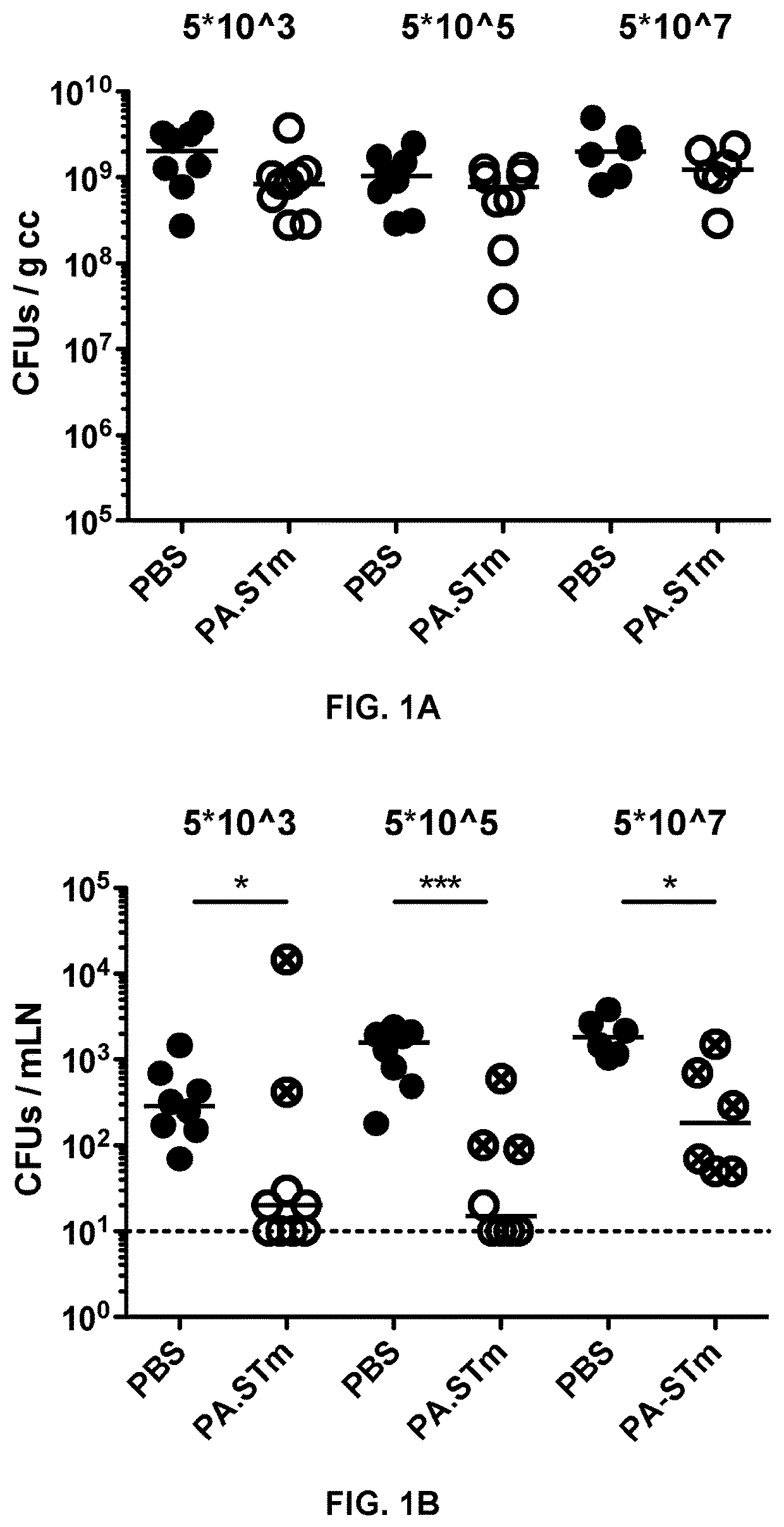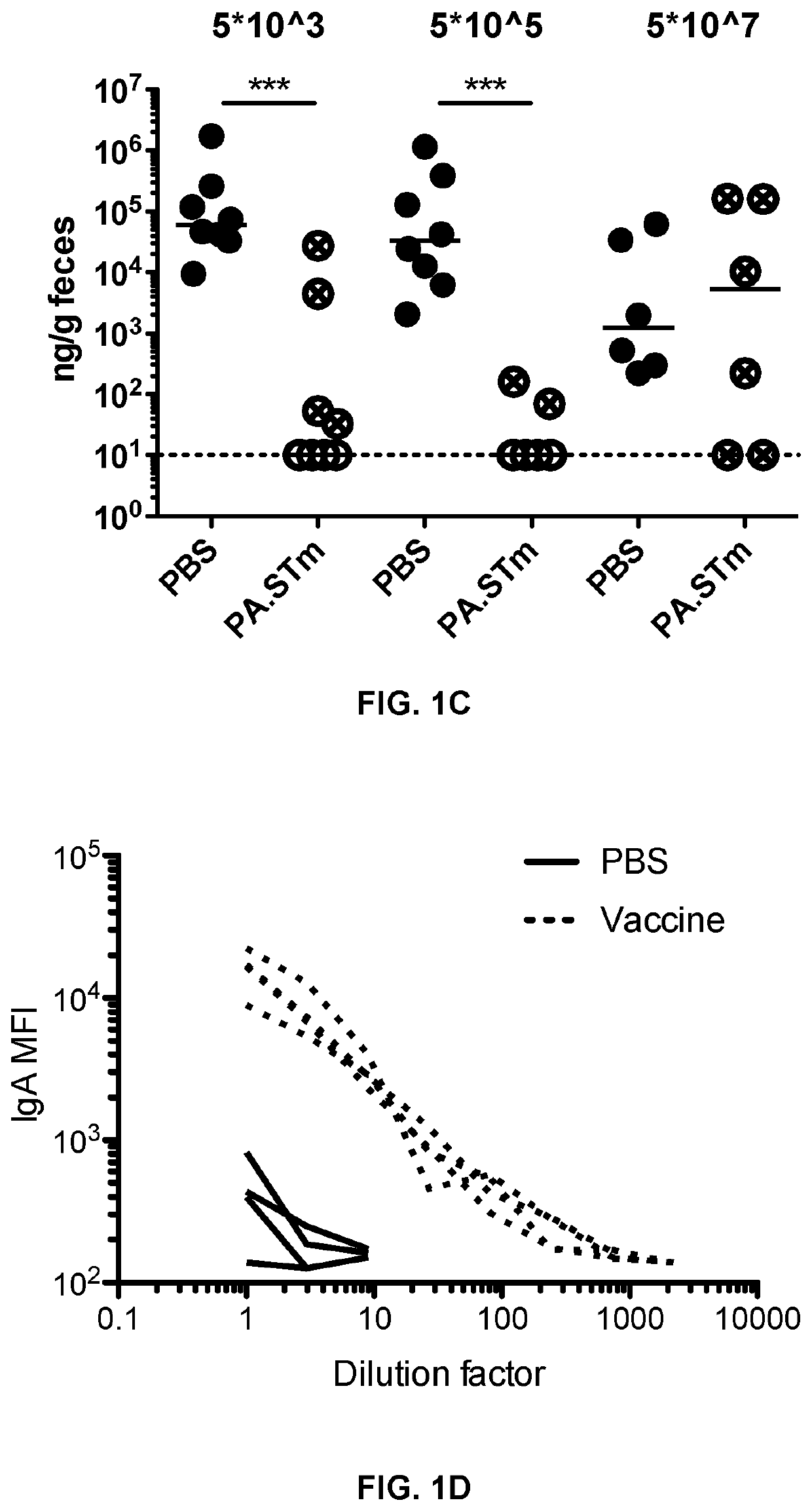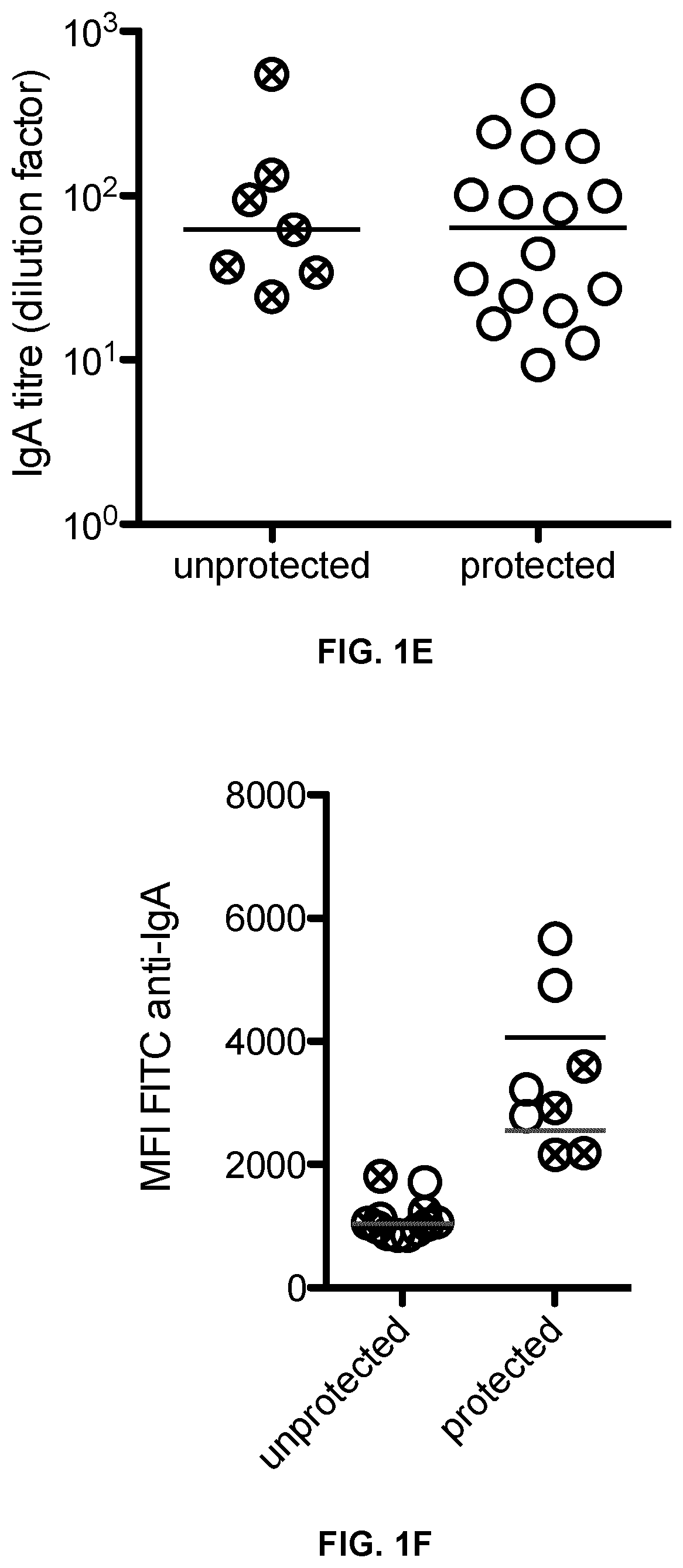New immunogenic compositions
- Summary
- Abstract
- Description
- Claims
- Application Information
AI Technical Summary
Benefits of technology
Problems solved by technology
Method used
Image
Examples
example 1
[0156]Mice Vaccinated with Inactivated Wild Type Salmonella enterica Serovar Typhimurium (S. typhimurium) are Weakly Protected from Wild-Type S. typhimurium Challenge Due to the Emergence of Vaccine-Escape Variants
Generation of Inactivated Oral Vaccines.
[0157]Peracetic acid killed vaccines were produced as previously described in Moor et al. Frontiers in Immunology (2016) Vol 7, Article 34. Briefly, bacteria were grown overnight to late stationary phase, harvested by centrifugation and resuspended to a density of 109-1010 per ml in sterile PBS. Peracetic acid (Sigma-Aldrich) was added to a final concentration of 1%. The suspension was mixed thoroughly and incubated for 60 min at room temperature. Bacteria were washed once in 40 ml of sterile 10×PBS and subsequently three times in 50 ml sterile 1×PBS. The final pellet was resuspended to yield a density of 1011 particles per ml in sterile PBS (determined by OD600) and stored at 4° C. for up to three weeks. As a quality control, each b...
example 2
[0166]Characterization of Salmonella Variants with Weak Binding to Standard Vaccine-Induced sIgA
[0167]To establish the nature of IgA escape, we first carried out Genome resequencing of S. typhimurium clones from vaccinated but unprotected mice.
Genome Resequencing
[0168]The genomes of S.Tmwt and evolved derivatives (Salmonella variants / clones) were fully sequenced by the Miseq system (2×300 bp reads, Illumina, San Diego, Calif.) operated at the Functional Genomic Center in Zurich. The sequence of S.Tm SL1344 (NC_016810.1) was used as reference. Quality check, reads trimming, alignments, SNPs and indels calling were performed using the bioinformatics software CLC Workbench (Qiagen).
Results
[0169]Genome sequencing revealed a common 7 base-pair contraction in the coding region of the OafA gene, known to encode an Abequose O-acetyl transferase which modifies the S. typhimurium O-antigen glycan repeat (FIG. 2A). Acetylation of the O-antigen Abequose converts a serovar O4 strain into a serov...
example 3
Strength of Vaccine-Mediated Selective Pressure on O-Antigen Structure.
[0176]In order to confirm that the intestinal antibodies of Salmonella infected mice, confer a major selective pressure for the emergence of these modifications, we carried out competitive infections.
[0177]To quantify the selective advantage of gain or loss of an acetyl group, we vaccinated mice, as described in Example 1, with vaccines constructed from O:4[5] serovar (acetylated O-antigen) S. typhimurium or from S. typhimurium carrying an in-frame deletion of OafA (non-acetylated O-antigen, O:4 serovar variant). On day 28, we carried out infectious challenges as described in Experiment 1, with the following modifications:
[0178]In order to specifically assay the effect of acetylation in the absence of glucosylation, we competed S. typhimurium carrying an in-frame deletion in GtrC (acetylated O-antigen, cannot glucosylate) (O:4[5], 12-0 serovar) with S. typhimurium carrying in frame deletions of GtrC and OafA (non...
PUM
| Property | Measurement | Unit |
|---|---|---|
| Time | aaaaa | aaaaa |
| Time | aaaaa | aaaaa |
| Composition | aaaaa | aaaaa |
Abstract
Description
Claims
Application Information
 Login to View More
Login to View More - R&D
- Intellectual Property
- Life Sciences
- Materials
- Tech Scout
- Unparalleled Data Quality
- Higher Quality Content
- 60% Fewer Hallucinations
Browse by: Latest US Patents, China's latest patents, Technical Efficacy Thesaurus, Application Domain, Technology Topic, Popular Technical Reports.
© 2025 PatSnap. All rights reserved.Legal|Privacy policy|Modern Slavery Act Transparency Statement|Sitemap|About US| Contact US: help@patsnap.com



